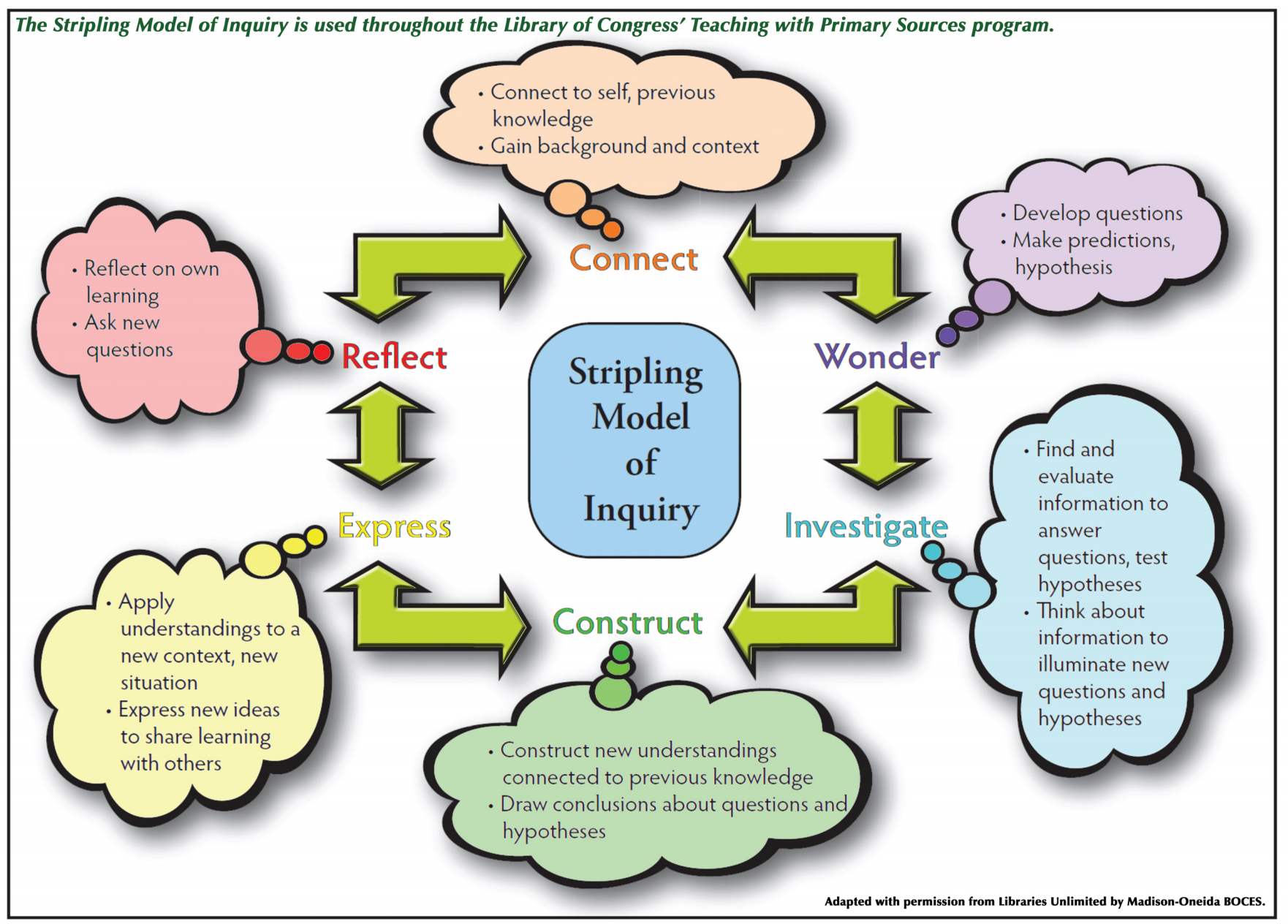
The Stripling Inquiry Model represents the inquiry process graphically to help students make sense of the inquiry process. The Library of Congress Teaching with Primary Sources program has helped to popularize the model. Find an in-depth discussion of inquiry and links to additional models and resources at Emerging America's Inquiry Strategies page.
In any given lesson, students will typically focus on one or two parts of the model at a time, such as developing focus questions, or investigating author's point of view. Through repeated work with the model, students gain skill at moving through all steps of an investigation. Steps may occur in just about any order.
Six Steps of the Inquiry Model
- Connect: Provide detailed context to the sources and connect to the major themes of historical study. What connects with each group of students is particular to them and to the time.
- Wonder: Develop focus questions at different levels of thought and connect to larger themes for the unit of study.
- Investigate: Determine the main ideas and details. Investigate the purpose of the source and the author’s point of view.
- Construct: Draw conclusions about the evidence that has been compiled.
- Express: Apply new ideas to share with others.
- Reflect: After every investigation, short or long, pause to ask what we learned about the inquiry process. What new skills? What approaches? What pitfalls? Also take a moment to identify new or still unanswered questions to take learning to a higher level.
Example of Inquiry Starting with a Primary Source
Source
Title: Puerto Ricans demonstrate for civil rights at City Hall, New York City. Date: 1967. Creator: Al Ravenna, New York World-Telegram and the Sun Newspaper Photograph Collection. http://www.loc.gov/pictures/item/97502365/
In this example, an investigation begins with a photograph from the collections of the Library of Congress. The purpose of the slide is to show how one possible path through which the steps of inquiry might flow. In this case, key guiding questions emerge from this brief investigation: "What are some effects of protest?" and "Is protest effective?"
Barbara Stripling explains the inquiry model in the embedded video. (3:39 minutes). Library of Congress YouTube Channel.
Library of Congress Teaching with Primary Sources (TPS) Quarterly Journal Archive - https://www.loc.gov/programs/teachers/about-this-program/teaching-with-primary-sources-partner-program/tps-journal/tps-journal-archive/ - TPS Quarterly — Inquiry Learning: Vol. 2, No. 3, Summer 2009.
Find an example of inquiry-based curriculum: Reform to Equal Rights: K-12 Disability History Curriculum.




